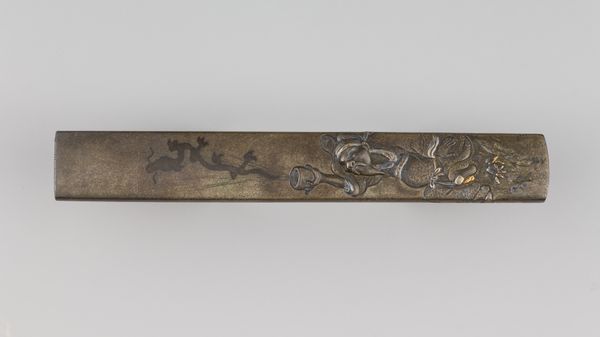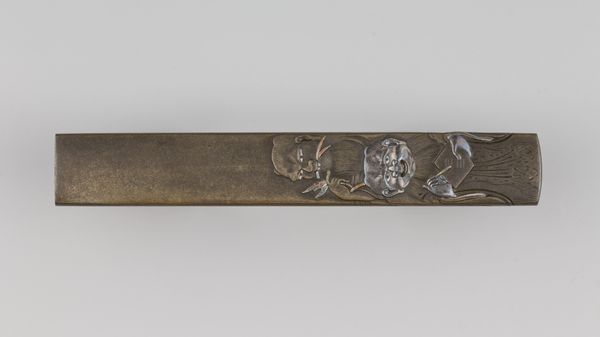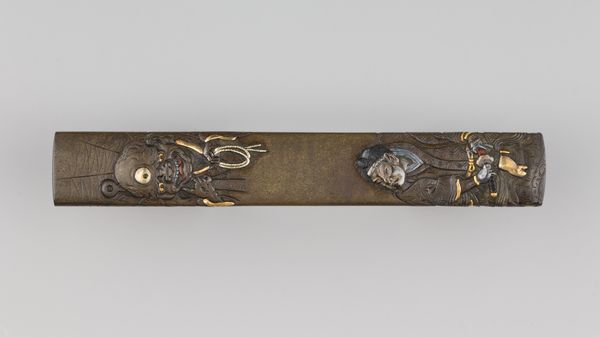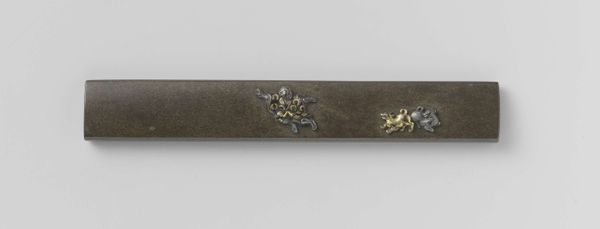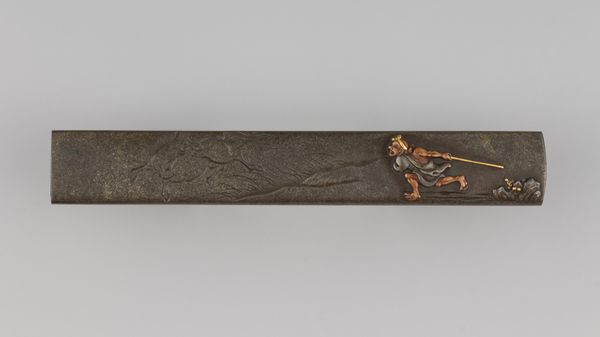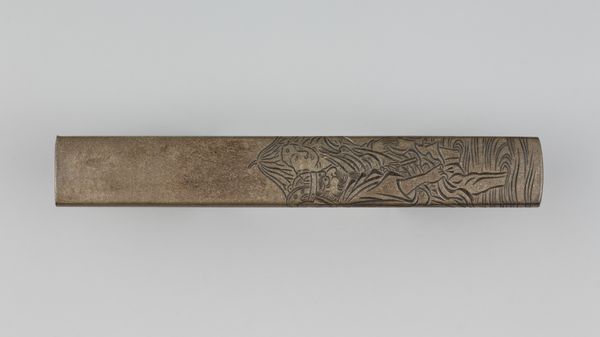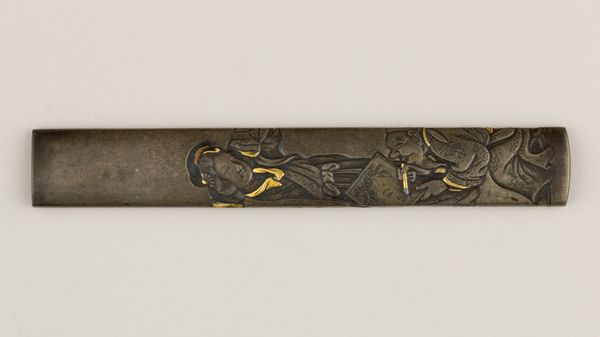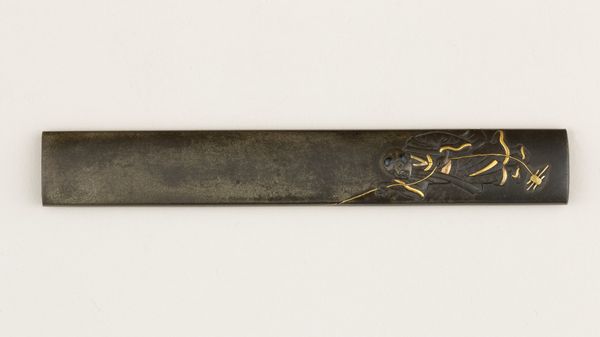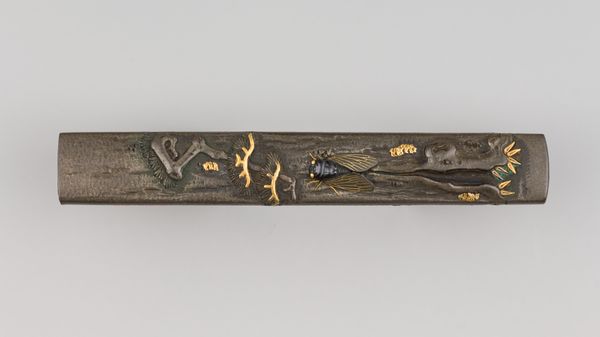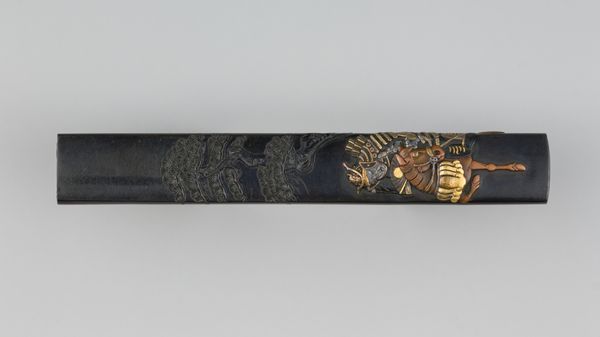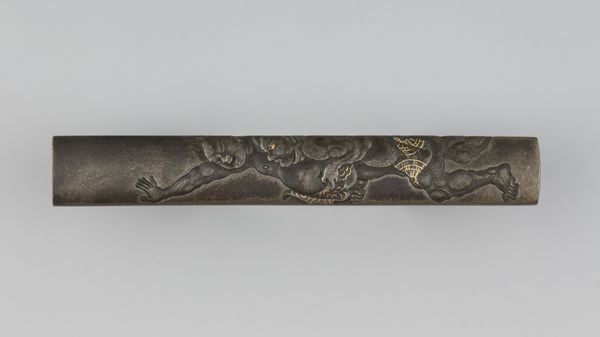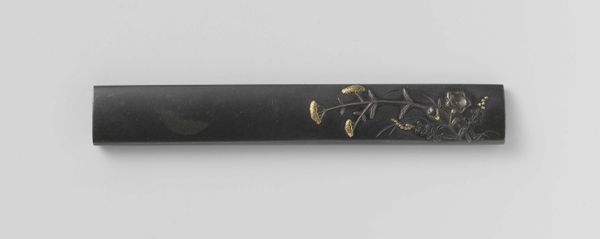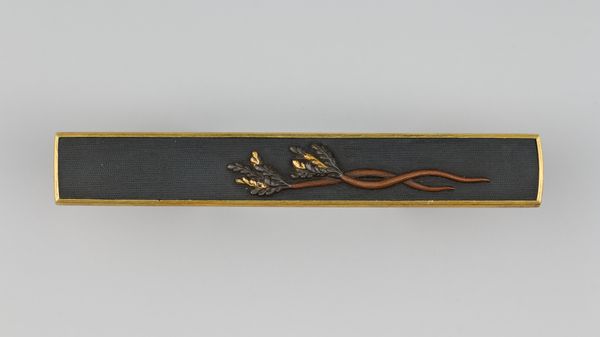
carving, metal, intaglio, relief
#
carving
#
metal
#
intaglio
#
asian-art
#
relief
#
flower
#
ukiyo-e
#
japan
#
curved arc
#
stoneware
#
sword
Dimensions: L. 3 13/16 in. (9.7 cm); W. 9/16 in. (1.4 cm); thickness 1/4 in. (0.6 cm); Wt. 1.2 oz. (34 g)
Copyright: Public Domain
Curator: At the Metropolitan Museum of Art, we have a knife handle, or kozuka, crafted by Genshosai Masaharu in 19th-century Japan. The piece utilizes metal carving and intaglio techniques to depict floral motifs in relief. What stands out to you at first glance? Editor: Its diminutive size is striking, almost precious. The fine gold details against the dark metal really pop; there's a beautiful contrast. I wonder how it was held, and what that grip would have felt like. Curator: Exactly. Consider the metalworking process involved: the selection of metals, the carving techniques required for the fine details. What labor went into this small everyday item? And, moreover, who had access to such an ornate item? It suggests a level of luxury, doesn't it? Editor: It does. This kozuka likely belonged to a member of the samurai class, visually broadcasting their status and refined taste. It reminds us that even everyday objects are never truly neutral but are bound in a web of social and power dynamics. The ukiyo-e influences also tie it to larger artistic and cultural movements. Curator: Precisely! The mass production of ukiyo-e prints democratized art to some extent, making it accessible to wider audiences. And here, elements of that aesthetic trickle up, if you will, into a crafted, unique item for the elite. The cross-pollination between the refined and the popular is quite striking here. Editor: Yes, it complicates simple binaries of high and low culture, demonstrating their intertwined nature. The selection of flowers also communicates symbolic messages deeply rooted in Japanese society. They weren't chosen at random. The flowers probably encoded messages relating to seasons or deeper philosophical meaning about beauty and power. Curator: Ultimately, this piece acts as a small, powerful nexus where material processes intersect with economic, social, and aesthetic forces. A testament to how even functional objects can speak volumes. Editor: And a reminder of the necessity to always contextualize art within the broader socio-historical frame to gain a full understanding.
Comments
No comments
Be the first to comment and join the conversation on the ultimate creative platform.
